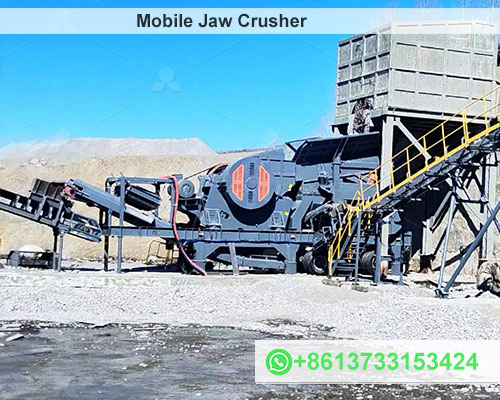How Does Mobile Jaw Crusher Adjust the Discharge of Material
Mobile jaw crusher is widely used in the mining industry for primary crushing of various rocks and minerals. The size of the discharged material is an important factor that affects the efficiency of the subsequent crushing and screening processes. Therefore, it is crucial to understand how the discharge of material is adjusted in mobile jaw crushers.

There are two primary methods for adjusting the discharge of material in mobile jaw crushers:
1. Using Adjusting Pads
The most common method for adjusting the discharge of material in mobile jaw crushers is by using adjusting pads. These pads are typically made of wear-resistant materials like manganese steel and are placed between the movable jaw and the stationary jaw. By increasing or decreasing the number of adjusting pads, the gap between the jaws can be precisely controlled, thereby regulating the size of the discharged material.
Advantages of using adjusting pads:
- Simple and straightforward adjustment process
- No need for specialized equipment or expertise
- Relatively inexpensive method
Disadvantages of using adjusting pads:
- The crusher must be stopped for adjustment
- Adjustments are not as precise as other methods
- Wear on the adjusting pads can lead to frequent adjustments
2. Using Wedge Blocks
Wedge blocks provide a more precise and convenient method for adjusting the discharge of material in mobile jaw crushers. These blocks are typically made of high-strength steel and are positioned between the adjusting screw and the movable jaw. By turning the adjusting screw, the wedge blocks are forced upwards or downwards, causing the movable jaw to move and consequently altering the discharge gap.
Advantages of using wedge blocks:
- Can be adjusted while the crusher is operating
- More precise adjustments compared to adjusting pads
- Adjustments are less frequent due to minimal wear on wedge blocks
Disadvantages of using wedge blocks:
- More complex adjustment mechanism compared to adjusting pads
- Requires specialized tools and expertise for adjustment
- Generally more expensive than using adjusting pads
Factors Affecting the Discharge of Material
In addition to the adjustment methods mentioned above, several other factors can influence the discharge of material in mobile jaw crushers. These factors include:
- The size and type of feed material: Larger and harder feed materials tend to require a wider discharge gap.
- The desired product size: A smaller product size typically requires a narrower discharge gap.
- The crushing speed: Higher crushing speeds may necessitate a wider discharge gap to prevent blockages.
- The wear condition of the jaw plates: Worn jaw plates can lead to a wider discharge gap, even with proper adjustments.
Mobile jaw crushers play a vital role in the mining industry by reducing the size of rocks and minerals to facilitate further processing. The discharge of material in these crushers is a critical parameter that influences the overall efficiency and productivity of the crushing operation. By understanding the different adjustment methods and factors affecting discharge, operators can optimize the performance of their mobile jaw crushers and achieve desired product sizes.








